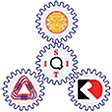Narrow AI Vs General AI: Boundaries and Use Cases
When you compare narrow AI to general AI, you'll quickly notice their distinct boundaries and capabilities. You're likely using narrow AI in everyday technology, but it can't step beyond its programmed tasks. General AI, though, aims for a broader understanding—something closer to human-like reasoning. While the promise of general AI is intriguing, it's not without serious hurdles. If you've ever wondered what separates useful automation from true machine intelligence, there's more to uncover.
Understanding Artificial General Intelligence (AGI)
Artificial general intelligence (AGI) poses a significantly different challenge compared to current artificial intelligence applications, which typically involve narrow AI designed for specific tasks. AGI aims to replicate human-like intelligence by possessing broad cognitive abilities, enabling it to learn and adapt based on generalized knowledge. This would allow AGI to tackle unfamiliar problems without the need for extensive retraining.
Despite the potential benefits of AGI, various limitations must be considered. These include high computational demands, the complexities of understanding consciousness, and ethical concerns related to autonomous decision-making.
Furthermore, while passing the Turing Test is often cited as a benchmark for AGI, it's essential to recognize that achieving AGI remains a complex endeavor that's likely years away due to the numerous intricacies involved.
If developed, AGI has the capacity to address complex global issues, but the challenges surrounding its implementation necessitate careful analysis and consideration.
Core Characteristics of AGI
AGI, or Artificial General Intelligence, remains a theoretical construct aimed at mimicking the full range of human cognitive processes. The foundational attributes of AGI encompass human-like cognitive capabilities, which include generalization across diverse domains, solid self-learning mechanisms, and sophisticated reasoning skills.
AGI is expected to exhibit contextual adaptability, meaning it should be able to comprehend various situations, learn from past experiences, and modify its decision-making strategies as needed.
Furthermore, an AGI system would likely integrate memory and set long-term goals while considering ethical implications in its actions.
The pursuit of AGI entails critical considerations regarding safety and responsible development, as its capabilities could significantly impact society.
The ongoing discourse around AGI emphasizes the need for thoughtful approaches to its creation and deployment, given its potential to replicate human intelligence in a broad, flexible manner.
Exploring Narrow AI (ANI) in Practice
Narrow AI, also known as Artificial Narrow Intelligence (ANI), is responsible for many intelligent systems that users interact with on a daily basis. It's designed to excel at specific tasks such as recommending movies, recognizing faces in images, and facilitating digital assistants. These applications range from voice-activated assistants to chatbots, which utilize machine learning algorithms to analyze user behavior, provide predictive maintenance, and automate data-related processes with a degree of efficiency.
For example, language processing capabilities found in devices like Siri and Alexa enable users to engage in conversational interactions. Similarly, personalized content recommendations are a common feature in various online platforms, enhancing user experience by tailoring suggestions based on previous interactions.
However, the limitations of Narrow AI are significant. It's designed to operate within a confined set of parameters and lacks the ability to adapt beyond its specified scope without undergoing retraining. As a result, while Narrow AI can perform its intended tasks effectively, it remains focused on its defined functions and can't generalize knowledge or skills outside of that domain.
This constraint emphasizes the distinction between Narrow AI and more advanced forms of artificial intelligence, which may possess broader cognitive abilities.
Key Differences Between Narrow AI and General AI
Artificial intelligence can be categorized into two main types: Narrow AI and General AI. Narrow AI, also known as weak AI, is designed to perform specific tasks such as language translation, image recognition, or making recommendations. Its capabilities are confined to well-defined domains, and it can't operate outside the parameters for which it was programmed.
Examples of Narrow AI include streaming services that suggest content based on user preferences and digital assistants that understand voice commands.
In contrast, General AI, or strong AI, aspires to replicate human-like intelligence, enabling it to understand, learn, and apply knowledge across a wide range of tasks and problem-solving situations. General AI aims to demonstrate adaptability by learning from experiences and transferring knowledge across different contexts.
Achieving General AI presents significant scientific and technological challenges, including the need for advancements in reasoning, generalization across domains, and addressing complex ethical considerations.
Currently, the advancements in artificial intelligence are predominantly reflective of the capabilities of Narrow AI, whereas General AI remains an area of active research with ongoing debates regarding its feasibility and implications for society.
Notable Examples and Applications of Narrow AI
Narrow AI, which is designed to perform specific tasks, has become integral to various aspects of daily life and different industries. For instance, voice recognition technology is widely utilized in devices such as Google Assistant, allowing users to obtain information quickly.
In the healthcare sector, specialized AI systems demonstrate capabilities in medical imaging, enhancing the detection of conditions in X-rays and MRIs, often with greater speed and accuracy compared to human radiologists.
In the realm of entertainment and e-commerce, recommendation algorithms serve as practical applications of Narrow AI. These systems analyze user behavior to tailor suggestions on platforms like Netflix and Amazon, contributing to a more personalized user experience.
Moreover, financial institutions implement AI-driven fraud detection systems that monitor transactions in real-time to identify and flag potentially suspicious activities, thereby enhancing security measures.
Furthermore, chatbots have emerged as a reliable tool for customer service, addressing inquiries effectively while optimizing operational costs.
The prevalence of Narrow AI across various sectors signifies its role in streamlining processes and improving efficiency in task execution.
Hypothetical Use Cases for AGI
Current AI systems exhibit strong capabilities in specialized tasks; however, Artificial General Intelligence (AGI) aims to achieve a level of cognitive function comparable to or surpassing human intelligence across various domains.
Potential applications of AGI could include autonomous diagnosis of illnesses in the healthcare sector, where it could analyze patient data to create tailored treatment plans that dynamically adjust to changes in patient conditions.
In the educational field, AGI could facilitate a personalized learning experience by adapting educational material to align with the strengths and weaknesses of individual students, potentially accelerating the learning process.
In supply chain management, AGI technologies could improve inventory management and demand forecasting through advanced data analysis, leading to greater operational efficiency.
In the creative industries, there's the possibility that AGI could enhance human creativity by generating art or music that incorporates emotional elements, effectively serving as a collaborator rather than a replacement.
Additionally, AGI's contributions to climate modeling and predictive analytics could play a role in addressing environmental challenges by providing more accurate assessments and forecasting capabilities.
Technical and Ethical Challenges in AGI Development
The development of Artificial General Intelligence (AGI) holds significant promise across a range of fields; however, it's accompanied by a variety of technical and ethical challenges that developers and researchers must navigate. A primary limitation in the advancement of AGI is the current constraints of computing power, which differ from Narrow AI systems that are designed to perform specific tasks efficiently.
Additionally, AGI systems face difficulties in common sense reasoning, which complicates their ability to solve real-world problems effectively.
On the ethical front, several concerns arise from the deployment of AGI. These include potential job displacement, as automation may replace certain roles, and issues related to reduced human oversight, which can lead to an erosion of accountability in decision-making processes.
Furthermore, if the training data used for AGI development isn't managed with care, there's a risk of perpetuating biases, resulting in unfair or faulty outcomes. The philosophical questions regarding consciousness and genuine autonomy in AGI still remain largely unresolved.
To address these multifaceted risks, it's essential to establish comprehensive regulatory frameworks that prioritize safety and responsibility in AGI deployment.
Such frameworks should emphasize the importance of ethical guidelines and ongoing accountability throughout the entire lifecycle of AGI systems. These measures are critical to ensuring that the development and implementation of AGI are aligned with societal values and public interest.
Theoretical Models Aiming for AGI
Addressing the technical and ethical challenges in AGI development requires a thorough examination of the foundational models that underlie this complex field. Unlike Narrow AI, which is designed to perform specific tasks effectively, Artificial General Intelligence (AGI) aims to achieve a form of intelligence that can replicate human cognitive abilities and demonstrate genuine contextual understanding.
Current theoretical models in AGI research incorporate methods such as reinforcement learning, transfer learning, and multimodal AI. These approaches facilitate the adaptation of knowledge and enable systems to integrate and synthesize information across various domains.
To measure advancements in AGI, benchmark tests, including the Turing Test, are employed as standard assessments.
It is essential to establish robust ethical guidelines and implement continuous oversight throughout the development of AGI. This ensures that advancements are made safely while addressing the challenges that come with creating autonomous systems that possess self-improving capabilities.
Engaging with these considerations is crucial for the responsible progress of AGI technology.
Business Value and Limitations of Narrow AI
In today’s business environment, Narrow AI provides tangible benefits by automating repetitive tasks and enhancing operational efficiency.
Implementing Narrow AI in specific areas, such as predictive maintenance, can reduce downtime and identify potential failures before they occur. In customer service, AI chatbots can handle routine inquiries, which can improve response times and overall customer satisfaction.
Additionally, marketing departments utilize personalized recommendation engines powered by AI to increase sales and enhance customer engagement.
However, it's important to understand the limitations of Narrow AI. Its capabilities are restricted to predefined operational boundaries and it lacks the ability to generalize knowledge beyond what it has been explicitly trained on.
This specificity means that Narrow AI performs well only within the environments for which it was designed, necessitating retraining if the application context changes. This characteristic emphasizes the need for careful consideration when integrating Narrow AI solutions across different functional areas within a business.
Preparing for Advancements in General AI
As the development of General AI progresses, businesses should proactively create a strategy for transitioning from Narrow AI systems to General AI. This alignment with long-term business objectives is essential.
Initially, integrating Narrow AI can help address specific operational challenges and yield measurable returns on investment (ROI).
Increasing AI literacy among employees is critical for the effective adoption of new AI models and technologies. Collaborating with AI solution providers may facilitate a more efficient and responsible integration of these advancements into existing systems.
Furthermore, establishing strong AI governance is crucial to ensure that transparency, ethical considerations, and accountability are prioritized as innovations in General AI come to the forefront.
Conclusion
As you navigate the evolving world of AI, it’s important to recognize both the practical value of narrow AI and the immense potential—plus challenges—of general AI. While you’re already benefiting from specialized AI in daily tasks and business solutions, true AGI remains on the horizon. By understanding their boundaries and use cases, you can make informed decisions now and stay prepared as artificial intelligence continues to advance, reshape industries, and transform possibilities in the future.















